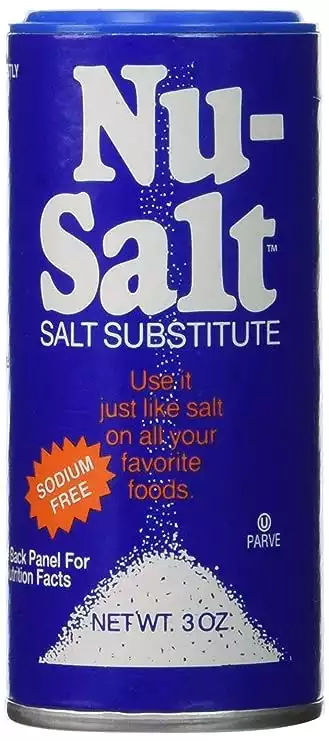How Much Salt in Pizza Dough?
Salt in Pizza Dough
We all know that perfectly crafted pizza dough is the foundation of a truly divine pie. And when it comes to dough, there’s one key ingredient that can’t be overlooked: Salt.
With our years of experience in crafting the ultimate pizza dough, we’re here to guide you through the intricacies of salt and its role in creating a masterpiece that will make your taste buds sing.
In this post, explore the world of pizza dough and salt, how much salt you should use, the best type for your dough, what to do if you accidentally over-salt, and much more.
Join us as we share four essential rules for mastering the art of salt in pizza dough, ensuring your pies are always top-notch and utterly mouthwatering.
Let’s see what salt on pizza can do!
Here’s What You Will Find:
Key Takeaways
Salt in Pizza Dough
Salt enhances the dough’s flavor and balances the dough’s sweetness. It also helps to bring out the natural flavor of the flour and makes the crust taste good when combined with other ingredients.
Fine sea salt is preferred for making pizza dough. The finer texture of these salts allows for better mixing into the dough. Try not to use iodized salt.
The amount of salt in pizza dough used can vary based on personal preference, but a good starting point is about 2% of the total flour weight used in the dough recipe or 1/2 tsp per cup of flour.
Salt slows down yeast fermentation in the dough, which helps to control the rise and overall texture. A slower fermentation also allows for better flavor development, giving the crust a more complex taste.
Why Do We Need to Put Salt in Pizza Dough?
The first reason we put salt in pizza dough is flavor because who wants to eat a bland crust? The role of salt in pizza is to magnify the taste of everything, making them taste a lot better.
Salt adds a lot more to the pizza-making process than just flavor. It performs a variety of roles, including but not limited to the power of unity.
This powerful ingredient has a direct and sometimes controversial relationship with yeast. It’s like a loving couple always fighting, but their love is so strong they can’t be apart.
Enough of love stories. Let’s get back to salt!
Pro Tip
When using salt, always consider the salt content in the pizza’s toppings, and balance the saltiness of the overall baked pizza.
Role of Salt in Pizza Dough:
- When salt is combined with the flour, yeast, and water mixture, the role of salt in pizza is to help strengthen the gluten network, making the dough more robust and elastic for the perfect pizza dough.
- The unification is so durable that it helps to maintain the growth of bacteria resulting in a dough with beautiful end color.
- Salt also acts as a preservative and keeps the dough ball from oxidizing and discoloring.
- Controlling the salt can reduce the risk of having a “blown” or over-fermented dough.
- Salt slows fermentation in the pizza dough because it causes yeast cells to release some moisture, making them less active. For this reason, you must control fermentation to develop the perfect combination of time, flavor, and the best texture.
- The most crucial role of salt in pizza dough is that it improves the overall texture of the dough because it gives a drier feel or less stickiness with dramatic elasticity.
How Much Salt in Pizza Dough?
The amount of salt in pizza dough can vary based on the recipe, but a general guideline is about 1-2% of the weight of the flour used. For example, if you’re using 500 grams of flour, you’d use about 5-10 grams of salt. This is approximately 1 to 2 teaspoons, as one teaspoon of table salt typically weighs around 5 grams.
However, the Associazione Verace Pizza Napolitana guides recommend not using more than 3% of the total flour.
The weight of one cup of all-purpose flour is typically around 125 grams. So, if you’re using 4 cups of flour (roughly equivalent to 500 grams), you’d want to use approximately 1 to 2 teaspoons of salt, based on the 1-2% guideline. The exact amount can vary based on taste and specific recipe instructions.
Do You Have to Put Salt in Pizza Dough?
Not at all! It’s entirely up to you. Salt isn’t necessarily essential, although it can help in gluten formation. Salt strengthens the gluten; one of the most important reasons your pizza dough needs salt is that it helps to strengthen your dough.
This makes the dough able to keep its shape during a long leave. A stronger will also make more air bubbles and give you a soft, open crumb. Ultimately, the decision is yours, but the pizza dough will not taste or perform the same without salt.
Does Salt Kill Yeast?
Salt can inhibit the activity of yeast if they come into direct contact, especially in high concentrations, but it won’t outright kill the yeast. This is why recipes often advise adding salt to the flour before adding the yeast, particularly when using active dry yeast.
In appropriate amounts, salt plays a beneficial role in yeast doughs by helping control the rate of yeast fermentation, which can prevent the dough from rising too quickly and resulting in a better texture and flavor.
What to Do if You Add Too Much Salt to Pizza Dough?
If you’ve added too much salt to your pizza dough, one of the best solutions is to make another batch without any salt and combine the two batches. This will dilute the saltiness across a larger amount of dough.
If making more dough is not an option, you might try adding a bit more of the other ingredients (water, yeast, sugar, and flour) to balance the flavor. However, this might affect the texture and rising properties of your dough. Unfortunately, once salt is added to the dough, it can’t be directly removed.
When to Add Salt to Pizza Dough
Salt should be added to the pizza dough during the mixing process. Mixing it with the dry ingredients before adding the water and yeast is often best. However, avoid adding salt directly to the yeast, especially if you’re using active dry yeast, as it can inhibit yeast activity. So, for instance, you might mix the flour and salt together first, then add the water and yeast.
What Does Salt Do in Pizza Dough?
Salt plays several important roles in pizza dough.
First, it enhances the flavor of the dough, making it more savory and bringing out the flavors of the other ingredients.
Second, it strengthens the gluten network in the dough, which improves the dough’s texture and helps it hold gas released by the yeast, resulting in a good rise.
Third, it helps control yeast activity, preventing the dough from rising too rapidly, which can result in off flavors.
Finally, it helps to control the browning of the crust as it bakes. Pizza dough would taste flat without salt and have a poor texture and appearance.
Pizza Pun
How Do You Fix A Broken Pizza?
With Tomato Paste
Best Salt for Pizza Dough
You should always use fine sea salt on your pizza dough. Its fine grind is essential for making doughs because it dissolves and disperses more quickly and evenly in water and the mixture than coarse sea salt or kosher salt.
Fine sea salt has the advantage that it disperses better and it’s easy to measure in small amounts.
Fine Sea salt contains more minerals than kosher or table salt.
The flour’s sodium interacts with gluten proteins, causing the gluten to contract.
Additional minerals like calcium and magnesium help tighten the gluten network even more with sea salt. More minerals = healthy dough.
Which Salt Should You NOT Use for Homemade Pizza?
It is recommended that you do not use iodized salt. Iodized table salt has a bitter iodine chemical taste.
Using Salt as a Finishing Ingredient
People always say that you eat with your eyes first. We think that’s true. Adding salt as a finishing touch to your pizza makes it more presentable and appealing, primarily if you use colored salt.
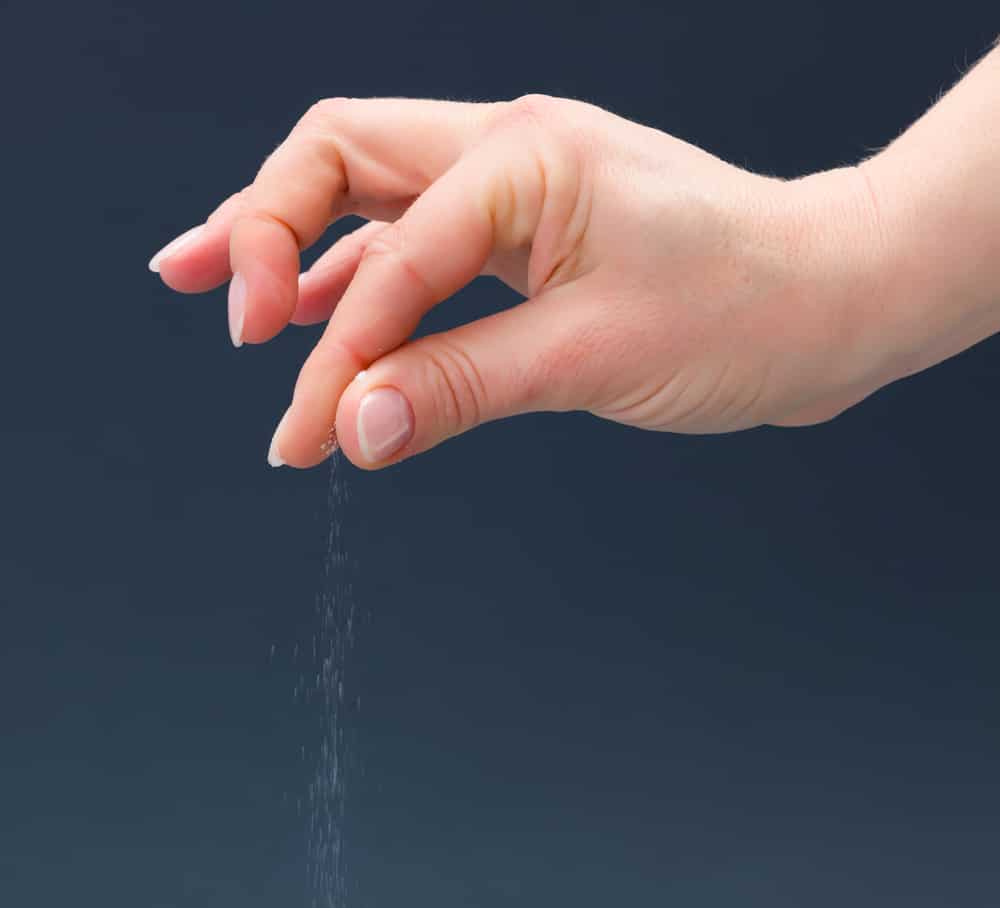
There is a variety of finishing salts that you can use with various textures and flavors. One of our favorites is the Black Salt from Hawaii and Maldon Sea Salt.
In this case, the role of salt is to enhance the beauty of your pizza with big flakes that are highly noticeable when used as a finishing touch.
Another favorite is Jacobsen Salt, which specializes in hand-harvested salt from Netarts Bay, Oregon. This salt has a beautiful texture and appearance with a clean taste.
Best Salt for Pizza Dough
Sea salt and kosher salt are often recommended for pizza dough because they’re pure and have a clean, unadulterated flavor. They also don’t contain anti-caking agents that are often found in regular table salt.
If using kosher salt, keep in mind that it’s less dense than table salt, so you’ll need to use more by volume (not by weight) to achieve the same level of saltiness.
If you only have table salt on hand, it will still work fine, but you might want to use slightly less due to its higher density. Always remember to adjust measurements based on the specific type of salt you’re using.
Here’s the salt we use and recommend. We love the Celtic Find Sea Salt because it’s all-natural, with no additives or processing beyond low-temperature drying and grinding.
Additionally, it’s a nutritious choice you can feel great about.
This salt is more nutritious than table salt because it retains the natural balance and spectrum of essential minerals. A sprinkle of this sea salt is a healthy addition to any dish or recipe!
This salt is also non-GMO Verified, certified Kosher, lower in sodium than table salt, and paleo-friendly.
If you’re looking for a sea salt that is versatile enough for use both as table salt and in your favorite dishes and recipes, look no further than our fine-ground Celtic Sea Salt. With a subtle flavor and delicious taste, it’s a great all-purpose salt to keep on hand in your kitchen. It can also be used for recipes, baking, pickling, and much more. This fine ground sea salt comes in (1) pantry-friendly 5-pound bag. Celtic Sea Salt is authentic, unprocessed whole salt from pristine coastal regions.
The only drawback of adding a good quality salt is that it will result in an additional cost.
Do You Have to Weigh Salt for Pizza Dough?
It’s better to weigh salt than measure it because different crystal sizes can give you different results when measured by volume.
Most recipes call for 2% or less salt, which does not dramatically impact the yeast’s growth.
In terms of yeast activity, salt slows down the fermentation process. This is important because it gives the dough time to develop flavor and structure before the yeast causes it to rise too much.
In a slow fermentation, the gluten proteins have time to interact and form a strong network that traps carbon dioxide gas bubbles. This results in a chewy, flavorful crust. Faster fermentations produce a lighter and airier crust but less flavor.
Role of Salt in Pizza Dough
How Much Salt in Pizza Dough
Too much salt slows the fermentation rate, and you risk killing the yeast and creating a tight dough that will be extremely difficult to handle and will not rise.
Pizza Dough Salt Percentage
Your salt content should be around 2% but not exceed 3% of your total flour weight. You can add more or less if you want. However, more salt will affect the fermentation process as it will take longer, and excess salt can kill the yeast.
On the other hand, less salt may result in a bland crust. The pizza crust must be flavorful, so your salt content will directly impact flavor.
Here’s how much salt you should use for pizza dough in grams:
Salt per Gram of Flour
| Flour(g) | Salt(g) |
|---|---|
| 200g | 6g |
| 300g | 9g |
| 400g | 12g |
| 500g | 15g |
If you don’t have a scale, you can use 1/2 teaspoon per cup of flour. Here are the amounts of salt in your pizza dough:
Salt per Cup of Flour
| Flour (Cups) | Salt (Teaspoons) |
|---|---|
| 1 Cup | 1/2 tsp |
| 2 Cups | 1 tsp |
| 3 Cups | 1 1/2 tsp |
| 4 Cups | 2 tsp |
When adding salt to your dough, you must consider the salt content in the pizza’s toppings and balance their saltiness on the baked pizza.
Most of the salt on the pizza will be in the cheese and toppings, primarily if you use cured meats like salami or pepperoni.
What Happens If You Don’t Put Salt in Pizza Dough?
Several things could happen if you don’t put salt in pizza dough.
Firstly, the flavor of the dough would be quite bland, as salt enhances the overall taste of the pizza.
Secondly, the dough’s texture could be adversely affected since salt strengthens the gluten network in the dough, helping it to hold the gases released by yeast and thereby influencing the rise and final texture of the crust.
Thirdly, salt also controls the rate of yeast fermentation; without it, the yeast could work too quickly, potentially leading to an undesirable taste and over-proofed dough.
Lastly, the crust might not brown as nicely without salt when baked. In summary, while you can technically make pizza dough without salt, it won’t have the same flavor, texture, or appearance as dough that includes salt.
How Do You Add Salt to Pizza Dough?
Salt should always be the last ingredient in the flour, water, yeast, and salt you combine. Not following the correct order may result in a slower or non-existent fermentation process.
Pizza lovers know that a salty dough enhances the bread-like flavor in the crust, making it a key component in achieving a good balance of flavors. When making pizza dough balls, it is essential to add salt evenly to all ingredients to ensure that the flavor is consistent throughout the dough.

Order of Ingredients
Here is where the four rules come into play.
Salt Rules: The Do’s and Don’ts of Salt in Pizza Dough
So, when handling salt, you should follow these rules:
- Follow the correct order of ingredients
- Don’t use more than 3% of the total flour
- Don’t allow the salt to come in direct contact with the yeast
- Don’t use Iodine Salt
Following these rules will enable the yeast to do its thing and have great results every time.
How Do You Remove Excess Salt from Pizza Dough?
You can’t remove the salt once you mix it with the rest of the ingredients. However, add more flour and water to your dough and mix for 2-3 minutes.
The extra mixture will absorb the excess salt. You will have more pizza dough for more pizzas!
Here are the Salts the PROs of Homemade Pizza Pro Use and Recommend
Black Garlic Salt is a flavor bomb of sweetness matched with savory notes of caramelized garlic. We ferment garlic in-house until it turns dark and sweet, then dry it, and blend it into our salt.
Black Hawaiian Lava Sea Salt is made by infusing pure sea salt with pure, premium quality activated coconut-shell charcoal. Black Lava Salt is harvested from the Pacific Ocean using ancient, traditional methods of solar evaporation to collect the salt and its natural trace minerals.
Accept no substitute for Maldon Sea Salt, because nothing else is quite the same. Maldon sea salt flakes are loved by chefs and shoppers the world over. It’s the soft flaky texture of the sea salt crystals and the cleanness of the salt flavor they deliver that makes the difference.
Is there a Salt Substitute for Pizza?
The role of salt in the pizza dough-making process is essential to the texture, taste, and overall performance of the pizza dough and the finished crust.
The finished crust will be flat without salt and have a bland flavor. Also, the fast fermentation process will cause the dough to rise quickly.
There are various ways to reduce the amount of salt in your dough. One method is to reduce the amount of salt added to the mixture.
If you want to reduce the amount of sodium, various products contain a lower percentage of sodium than fine sea salt.
Some of these products include the following:
- Morton’s reduced-sodium salt
- Mrs. Dash
- No Salt Original
Salt Substitutes for Pizza Dough
- A convenient substitute for table salt
- All the flavor without the sodium
- Great for baking or seasoning while cooking
- Enjoy anywhere you’d use table salt
- Contains potassium chloride
- Potassium chloride is the salt substitute component of the blend
- Use it just like salt on all your favorite foods
Designed for people on a doctor-recommended, sodium-restricted diet. But remember, it’s important to consult a physician before using any salt substitute
How Do You Fix Salty Pizza Dough?
As you can see, the role of salt in pizza dough is super powerful. When making pizza, the same cooking principle applies. You can always add it, but you can’t take it out. So, if you use too much salt in your dough, the results might not be expected.
The crust will probably be flat. Don’t discard this dough mixture; you can do so many other things with it.
For example, you make an artisan flatbread, deviating the crust’s attention to the spectacular toppings. Dress it up, and you can still be the best pizza maker.
The Last Slice
As you can see, making pizza at home is not complicated. Now that you know the role of salt in pizza dough and how much salt you should use, you must pay attention to the relationship between the main four ingredients – as in life – everything is related to everything else.
Once you’ve found the right amount of salt for your dough, add it when mixing all the ingredients.
Just keep this one basic principle in mind: Slow is the secret! Long, slow rising gives everything more time to develop deeper, fuller, stronger gluten structure and more complex flavors. With time comes flavor; this will make the best pizza dough!
So, how do you handle your salt? How much salt and which kind of salt do you use? Let us know; we would love to know.
Check Amazon’s Pizza-Making Must-Haves
Why have two pizza peels when you can only have one. This pizza peel surpasses the benefits of wood peels with the convenience of a metal peel. It's made entirely from anodized aluminum for a lightweight design that's incredibly durable, too. It's designed to be used frequently in high-heat pizza ovens.
The Etekcity Lasergrip 800 Digital Infrared Thermometer is a versatile and reliable tool for accurate temperature measurements. Its non-contact design allows you to measure temperatures from a distance, making it safe and hygienic for various applications. With a wide temperature range of -58°F to 1382°F (-50°C to 750°C), this infrared thermometer is perfect for both everyday cooking needs and professional uses.
The built-in laser pointer helps you target the specific area you want to measure, ensuring precision and consistency. Whether you're grilling, cooking, or performing household maintenance, the Etekcity Lasergrip 800 provides fast and accurate temperature readings with ease.
 NerdChef Steel Stone
NerdChef Steel Stone
Making great crusts traditionally requires a 700-1000F wood-fired oven. Nerdchef Steel Stone replicates that performance in a home oven with its super-high heat transfer ability - transferring heat energy 20 times faster than ceramic. It creates beautiful and crispier crusts, gorgeous blistering throughout, and it cooks faster.
The Chef's flour is a general-purpose, high gluten flour that works well for many recipes. "Tipo 00" refers to how refined the flour is. Chef's Flour is best for those who want to bake in their traditional home oven up to 500 degrees Fahrenheit!
Additional Resources on Pizza Dough
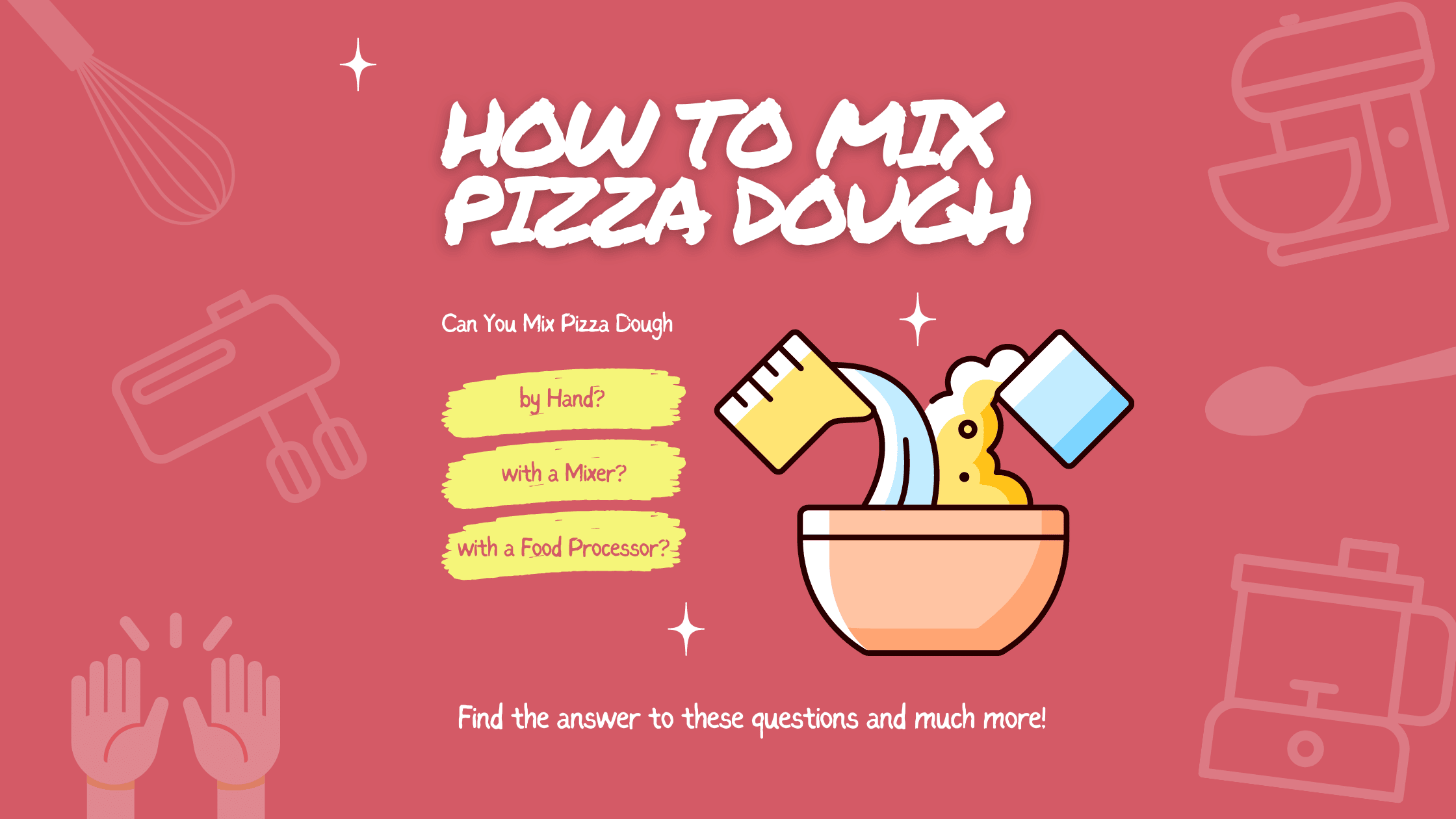
How to Mix Pizza Dough
the PROs
Do you want to learn how to mix pizza dough? Pizza dough is a staple in most households, but it …

Best Water for Pizza Dough: Temperature, Quality, and Hydration
the PROs
In this article, we are going to dive deep into the mysterious ways of water. In conjunction with flour, yeast, and salt, it can make the most spectacular pizza dough.
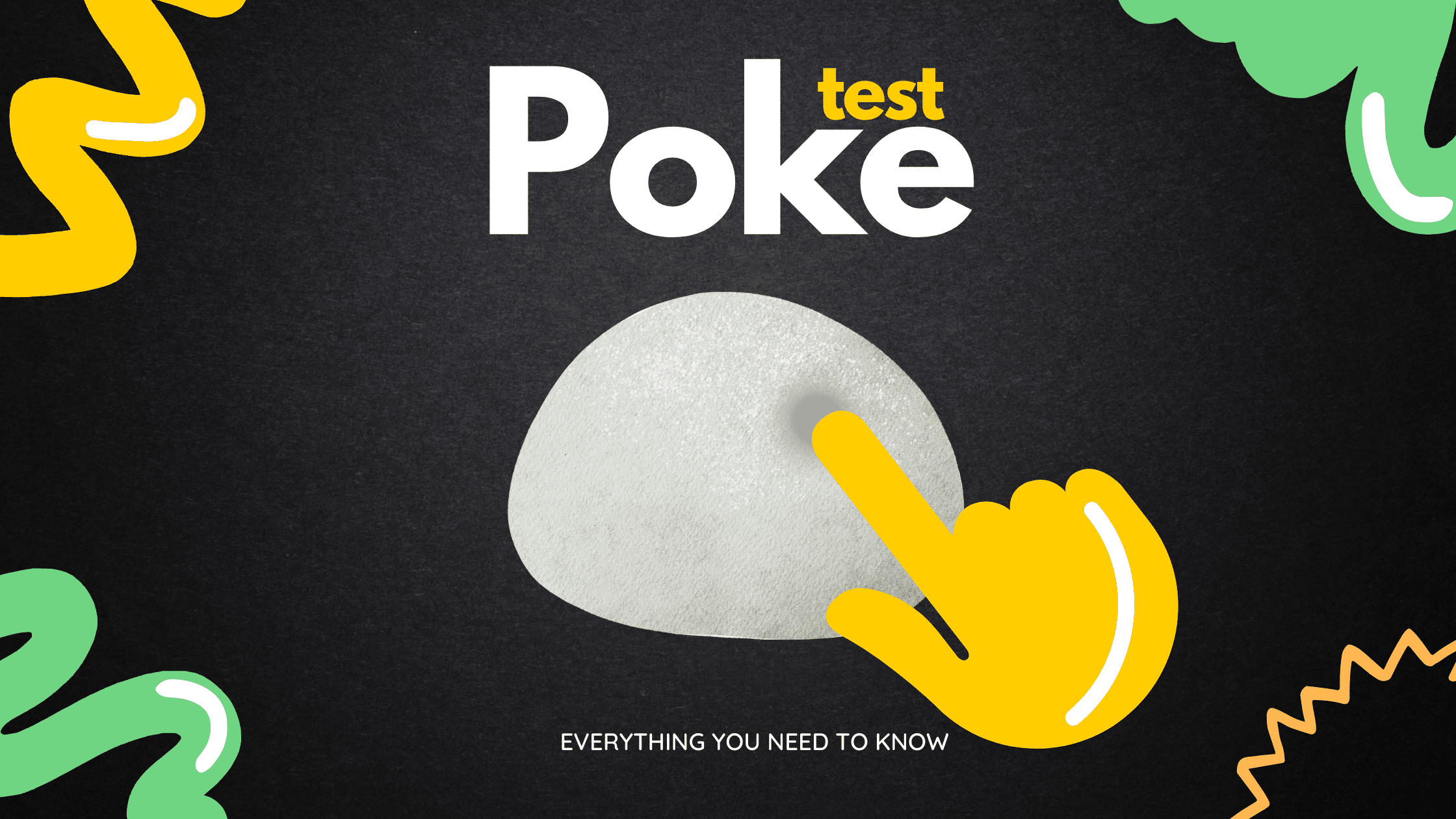
Poke Test Demystified: Master the Technique for Perfect Pizza Every Time
the PROs
Are you tired of ending up with a pizza crust that’s either too thick or still raw in some parts, …

How to Stretch Pizza Dough Like a PRO: Tips and Tricks to Elevate Your Homemade Pizza Game!
the PROs
So you’ve decided to make your pizza but are unsure how to stretch pizza dough to perfection. Well, fear not! …

How to Proof Pizza Dough Fast
the PROs
How to Proof Pizza Dough Fast Behind every tasty pizza dough is a secret. Secrets behind its fantastic flavor and …
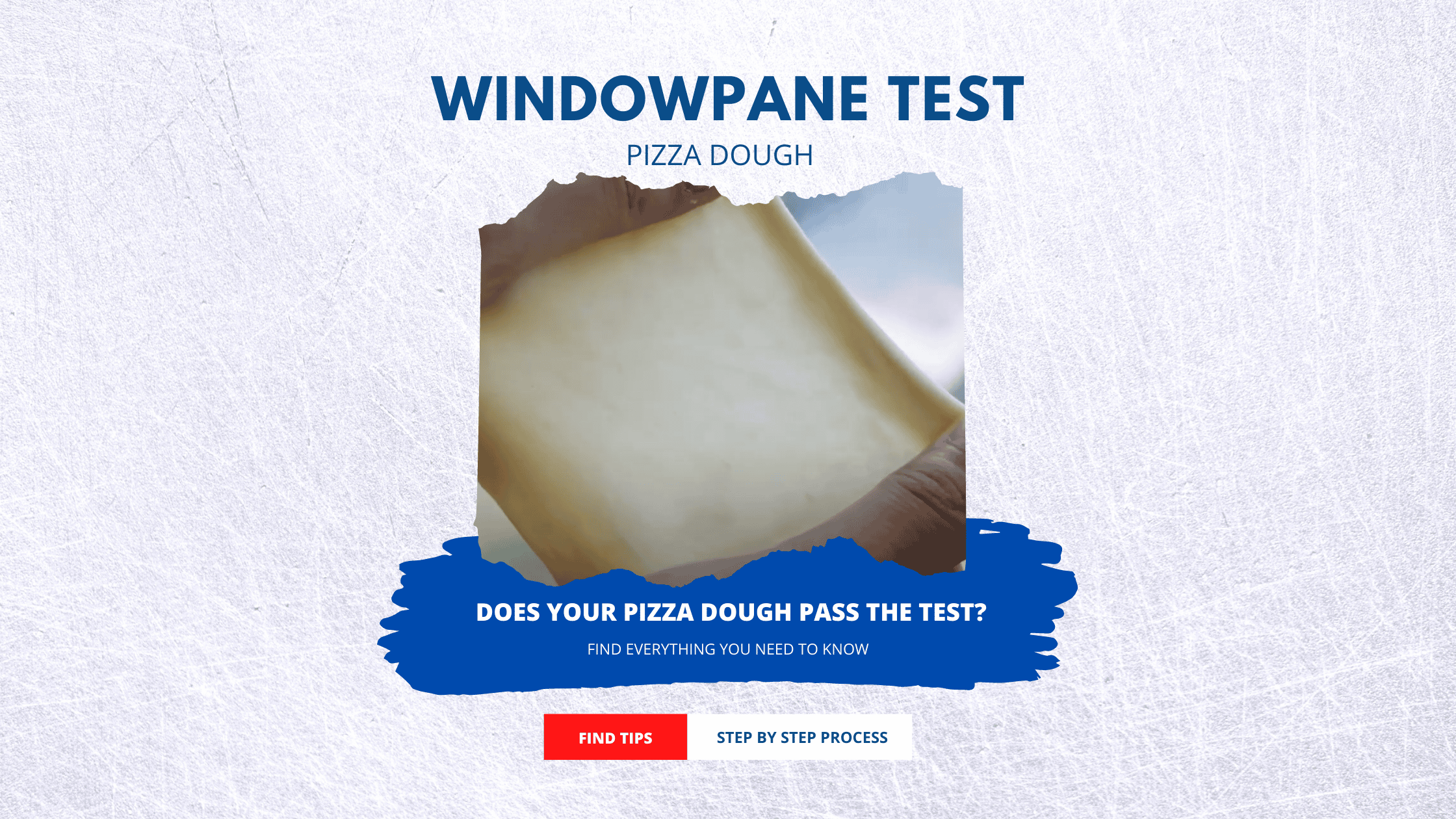
Windowpane Test: (Tips, How-to, and Everything You Need to Know)
the PROs
Pizza Dough Windowpane Test Kneading the dough is probably one of the most complex parts of baking a pizza. You …

Can You Freeze Pizza Dough? (Everything You Need to Know)
the PROs
How to Freeze Pizza Dough Are you wondering how to freeze pizza dough? Most of us know that putting things …
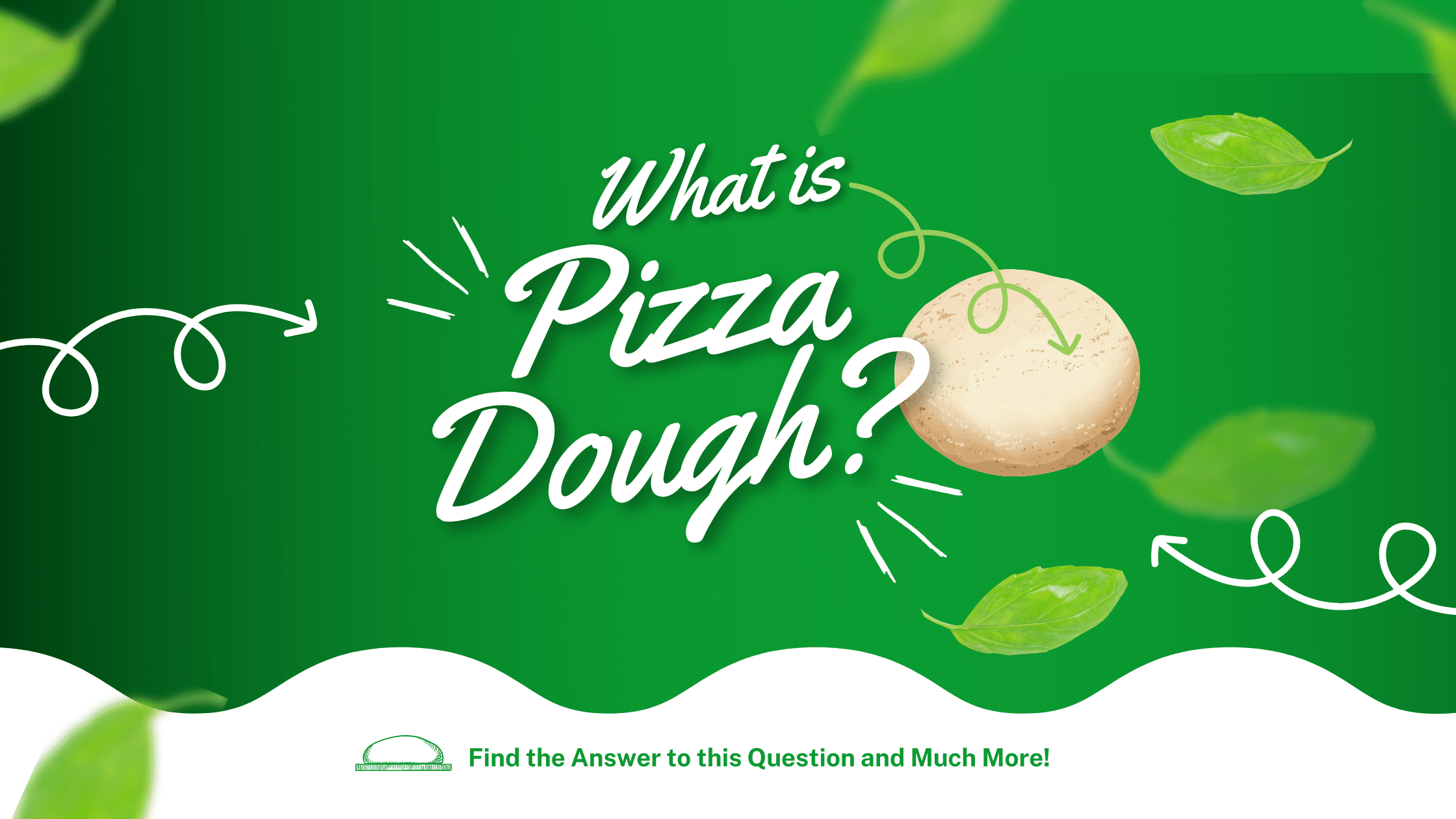
What is Pizza Dough? Here’s What You Need to Know and How to Make It
the PROs
Pretty much everyone likes pizza. But when you first start making pizza at home, you can feel a little overwhelmed. …

Can You Buy Pizza Dough? Yes, You Can! Find How to Choose and Where to Find It
the PROs
Can you buy pizza dough, you ask? Of course, you can! Is there anything you can’t buy at stores? Considering …
Enjoy!
Not a PRO? Not a Problem!
Take a pizza class to bring your pizza skills to the next level,
so you can be a PRO!
Related Posts

Costco Pizza Delivery: Find How You Can Get It Now!
the PROs
People go to Costco’s food court for many different reasons, but the cheesy slice of pizza they serve is among …

Pizza for Beginners: Don’t Buy Pizza, Make It! Here’s How to Get Started!
the PROs
You have this idea that you want to make pizza at home as opposed to ordering it, but where do you start? Don’t worry! Here you will find answers and directions to all your questions.

Pizza Toppings Under Cheese or Over Cheese? [Why the Order Matters]
the PROs
Is Pizza Cheese on Top or Bottom? Hey pizza lovers, are you wondering if you should layer pizza toppings under …
Newsletter
Subscribe to our Recipe of the Week newsletter and receive our partners’ latest recipes, tips, and discount offers.
Keep in Touch!






